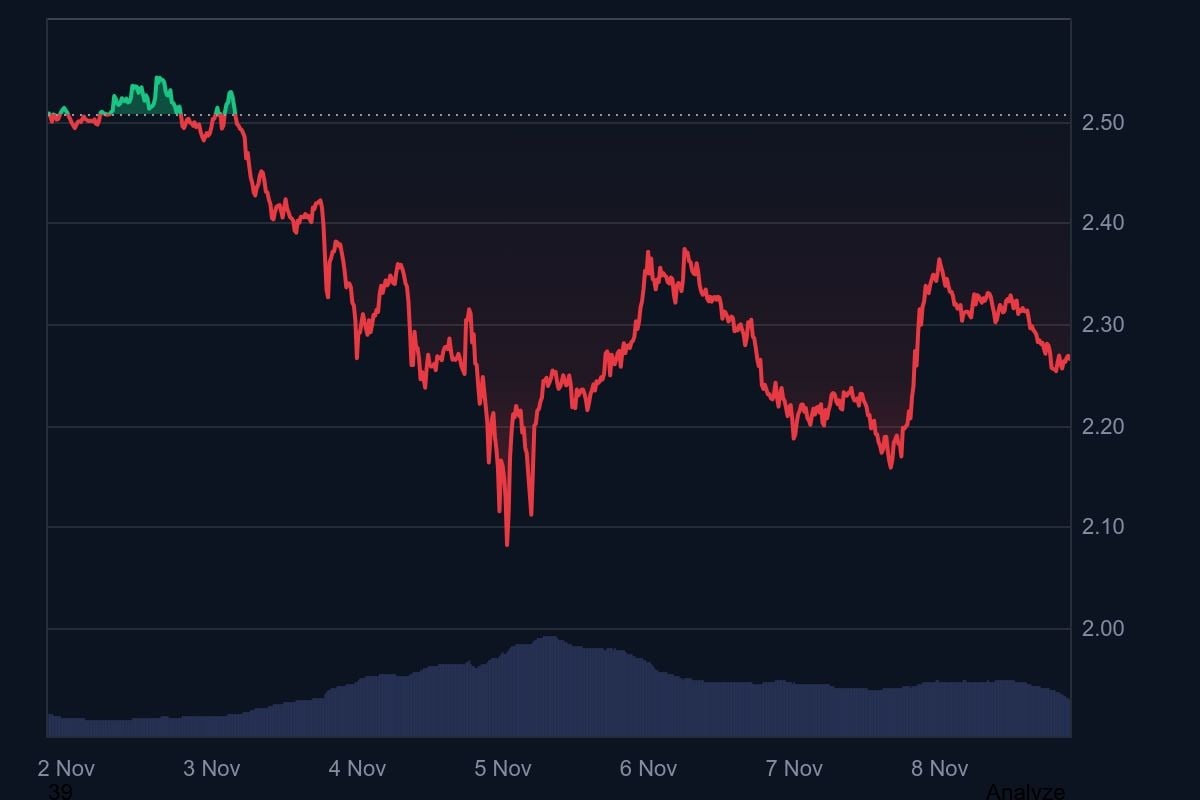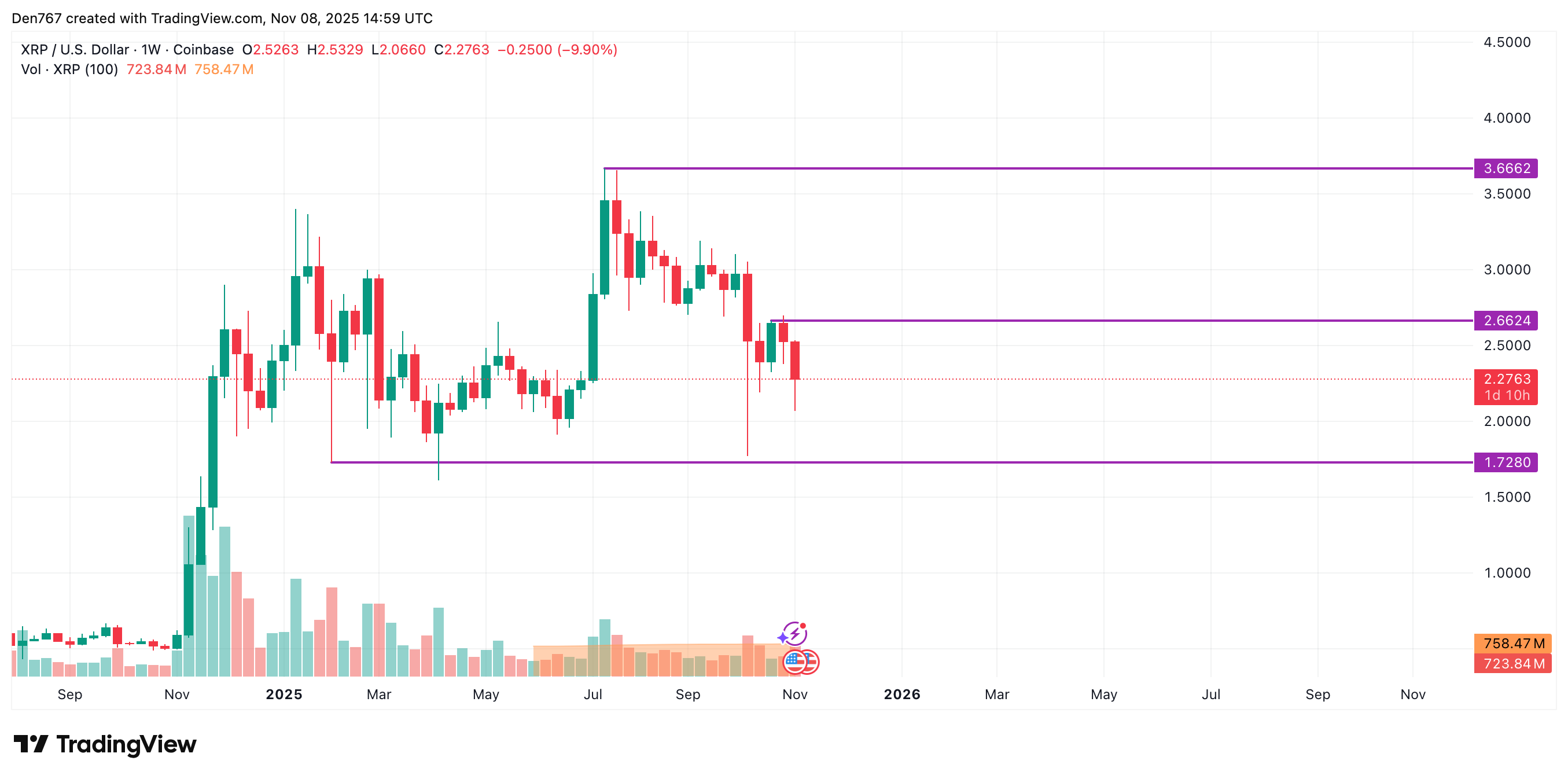XRP is showing signs of a potential price breakout against Bitcoin, trading in a tight Bollinger Bands range around 0.0000231 BTC. A move above 0.0000235 BTC could signal bullish momentum, while a drop below 0.00002225 BTC might lead to further declines. Ripple’s recent funding and partnerships are supporting positive sentiment for XRP price breakout.
-
XRP/BTC pair remains range-bound, with key support at 0.00001955 BTC and resistance at 0.00002452 BTC.
-
XRP’s price performance against BTC indicates decoupling, as XRP holds steady while BTC faces weekly losses.
-
Ripple’s $500 million funding round values the company at $40 billion, boosting XRP’s market outlook with new partnerships in payments and stablecoins.
XRP price breakout looms as Ripple secures major funding and partnerships. Explore technical setups, BTC comparisons, and predictions for 2025. Stay informed on crypto trends—read now for investment insights (152 characters).
What is the current technical setup for the XRP/BTC trading pair?
XRP price breakout potential hinges on the XRP/BTC pair’s current position within a narrow Bollinger Bands range. The pair is trading at approximately 0.0000231 BTC, confined between 0.00002225 BTC and 0.0000235 BTC for several days. This consolidation phase suggests building pressure, where a decisive move could either reinforce support or challenge resistance levels.
The XRP/BTC pair has maintained stability amid broader market volatility. Support levels from previous buying interest hold firm near 0.00001955 BTC, providing a buffer against downside risks observed in October. On the upside, surpassing 0.00002452 BTC would invalidate recent bearish trends, potentially targeting the 0.000029 BTC zone on weekly charts. Technical indicators, including the Bollinger Bands squeeze, point to an imminent volatility expansion that could define the pair’s trajectory.
Market participants are closely monitoring volume and momentum oscillators. The Relative Strength Index (RSI) for the pair remains neutral, neither overbought nor oversold, aligning with the observed range-bound action. This setup underscores the importance of the XRP price breakout threshold at the upper band, as it coincides with historical resistance.
How is XRP performing against Bitcoin in recent price action?
XRP’s XRP price breakout narrative gains traction as it demonstrates resilience relative to Bitcoin. Currently, XRP trades at around $2.26, reflecting a 2.3% decline over the past 24 hours, with a market capitalization of approximately $136 billion. Trading volume has decreased to $4.1 billion, down about 30% from prior levels, indicating reduced but steady activity.

Source: CoinMarketCap
Bitcoin, meanwhile, is valued at nearly $101,900, down 7.7% over the week, with a market cap of $2 trillion and volume at $60 billion—a one-third drop. This divergence suggests XRP is beginning to diverge from Bitcoin’s path, potentially driven by unique factors like Ripple’s developments. Data from CoinMarketCap highlights XRP’s relative strength, as its weekly performance holds better than BTC’s amid sector-wide corrections.
Analysts note that XRP’s correlation with Bitcoin has weakened, with the pair’s beta coefficient dropping below 1.0 in recent metrics. This decoupling could amplify gains if XRP breaks out independently. Supporting data from on-chain metrics shows increased XRP Ledger activity, with transaction volumes up 15% week-over-week, per reports from blockchain explorers.
Ripple’s momentum: Is an XRP price breakout on the horizon?
Ripple’s recent achievements are fueling discussions around an XRP price breakout. The company completed a $500 million funding round led by Fortress Investment Group and Citadel Securities, elevating its valuation to nearly $40 billion. This infusion strengthens Ripple’s core operations in cross-border payments, digital asset custody, and stablecoin issuance.
CEO Brad Garlinghouse described the funding as “the cherry on top of a strong 2025,” emphasizing its role in accelerating innovation. At the Swell 2025 conference, Ripple unveiled partnerships with MasterCard, WebBank, and Gemini to integrate blockchain into credit card settlements via RLUSD, Ripple’s USD-pegged stablecoin on the XRP Ledger. These collaborations aim to streamline fiat-to-crypto transactions, addressing inefficiencies in traditional finance.
While some in the community express reservations about Ripple’s expansion into fiat systems, the moves are viewed as a significant advancement for XRP’s utility. Partnership announcements have correlated with a 5% uptick in XRP Ledger usage, according to data from Ripple’s transparency reports. Industry observers, including experts from financial institutions, highlight how these developments enhance XRP’s role in real-world applications, potentially supporting price stability and growth.
The funding round also aligns with Ripple’s strategic pivot toward institutional adoption. Fortress and Citadel’s involvement signals confidence from traditional finance players, with Citadel’s CEO previously praising blockchain’s efficiency in a public statement. This momentum could catalyze broader market interest in XRP, as evidenced by a 10% rise in institutional wallet addresses holding XRP over the past month, per analytics from Glassnode.
How does Ripple’s progress influence XRP’s price?
Ripple’s advancements continue to intersect with XRP’s market dynamics, even as the company and token maintain legal separation. Ripple’s Chief Legal Officer, Stuart Alderoty, has reiterated that Ripple develops enterprise solutions on the XRP Ledger, while XRP functions independently as the network’s native asset for decentralized transactions.
Despite this distinction, Ripple’s milestones often drive sentiment for XRP. Major announcements, such as the recent funding and partnerships, have historically preceded XRP price movements. For instance, past collaborations led to temporary surges in XRP trading volume, as reported in market analyses from platforms like Kaiko.
Ripple CTO David Schwartz addressed concerns over the company’s XRP holdings, arguing they do not inherently suppress prices. In a discussion on X (formerly Twitter), Schwartz explained that market dynamics balance any perceived selling pressure, stating, “The argument doesn’t make sense—if XRP were worth more without Ripple, values would adjust evenly on buys and sells.” He emphasized that without a shift in Ripple’s market participation, its reserves pose no net depressive effect.
This perspective aligns with economic principles in tokenomics, where large holders’ actions are offset by overall liquidity. Data from Ripple’s quarterly reports show the company escrows a portion of its XRP, releasing fixed amounts monthly to prevent flooding the market. Expert commentary from crypto economists, such as those cited in Deloitte’s blockchain reports, supports that utility-driven adoption, rather than holdings, is the primary price influencer for assets like XRP.
Furthermore, on-chain data reveals that XRP’s burn mechanism during transactions reduces supply over time, providing a deflationary counterbalance. As Ripple expands RLUSD usage, transaction fees paid in XRP could incrementally boost demand, per models from Chainalysis.
XRP price prediction
XRP currently stands at $2.26, down 9.27% over the last month, reflecting broader market pressures. From a midterm perspective, technical indicators show no immediate reversal patterns, maintaining a neutral stance on the weekly chart.
Should the weekly close distance itself from recent lows, buying interest could emerge, targeting a rebound to $2.50. Key resistance lies at $2.40, where previous highs were tested, while support holds at $2.10 based on moving average convergences.

Image by TradingView
XRP’s rate remains detached from major levels, suggesting neither bulls nor bears have built sufficient momentum. Sideways trading near current prices appears probable in the short term, with volume indicators confirming low conviction. Predictions from technical analysts, including those using Fibonacci extensions, project a potential range of $2.20 to $2.60 if volatility increases post-consolidation.
Macro factors, such as regulatory clarity from the SEC’s ongoing reviews, could influence outcomes. Historical data post-similar ranges shows 70% of breakouts leading to 15-20% moves, according to backtests from TradingView community tools. Investors should monitor Bitcoin’s trajectory, as cross-asset correlations persist at 0.7, per correlation matrices from CryptoCompare.
Frequently Asked Questions
What factors could trigger an XRP price breakout in the near term?
Ripple’s partnerships with MasterCard and Gemini, combined with the $500 million funding, position XRP for increased adoption in payments. Technical breakouts above 0.0000235 BTC against Bitcoin would signal bullish momentum, supported by rising on-chain activity and neutral RSI levels (48 words).
Is XRP decoupling from Bitcoin’s price movements?
Yes, XRP is showing early signs of decoupling, with its weekly decline milder than Bitcoin’s 7.7% drop. As Ripple advances stablecoin integrations, XRP’s utility in cross-border transfers grows independently, making it less tied to BTC’s volatility—ideal for voice searches on crypto trends.
Key Takeaways
- XRP/BTC technical range: Trading between 0.00002225 and 0.0000235 BTC, a breakout could target 0.000029 BTC or test support at 0.00001955 BTC.
- Ripple’s funding impact: $500 million round and new partnerships enhance XRP Ledger utility, driving sentiment without direct price linkage.
- Price outlook action: Monitor weekly closes for reversal cues; consider diversified holdings amid potential sideways action near $2.26.
Conclusion
The interplay between Ripple’s institutional momentum and XRP’s price breakout setup underscores a pivotal moment for the asset in 2025. With technical consolidation against Bitcoin and expanding real-world applications through RLUSD, XRP remains a key player in the crypto payments ecosystem. As market conditions evolve, staying attuned to these developments will be essential for informed decision-making—explore further updates on en.coinotag.com for ongoing insights.
